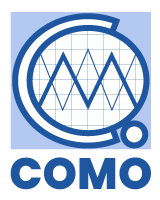Content
- Similar to OWASP Top 10 Proactive Controls (
- Reactive control and medial frontal cortex
- OWASP Top 10 Proactive Security Controls For Software Developers to Build Secure Software
- Proactive and reactive control
- Social Cognitive Neuroscience, Cognitive Neuroscience, Clinical Brain Mapping
- Meet ProActive Response Group
- Proactive Control Mediates the Relationship Between Working Memory and Math Ability in Early Childhood
Two of the functional subpopulations of neurons that have been observed in the FEF during gaze shifts are movement and fixation neurons. FEF neurons innervate the superior colliculus (Segraves and Goldberg, 1987; Sommer and Wurtz, 2000) and the neural circuit in the brainstem that generates saccades . Just as functional requirements are the basis of any project and something we need to do before writing the first line of code, security requirements are the foundation of any secure software. In the first blog post of this series, I’ll show you how to set the stage by clearly defining the security requirements and standards of your application. You’ll learn about the OWASP ASVS project, which contains hundreds of already classified security requirements that will help you identify and set the security requirements for your own project. Cognitive control, the ability to regulate and coordinate goal-directed behavior so as to allow for flexible adaptation to changing environments, has been considered as one of the most basic cognitive skills in humans .
- Often, specific study resources are required for particular exams, while other resources may be recommended.
- Purple lines indicate the cortico–pontine–cerebellar–thalamic–cortical circuits for learning in movement control.
- The sequential effects show that the state of responsiveness of the motor system is constantly adjusted by control signals that reset the balance of excitation and inhibition within the motor system.
- A growing body of studies have been dedicated to investigating the potential factors accounting for individual differences in math ability (Bull and Scerif, 2001; De Smedt et al., 2009; Wang et al., 2015).
- The PBI score was computed as (AY − BX)/(AY + BX) for both error rates and reaction time.
Nevertheless, this is unlikely as our hierarchical regression model showed that proactive control still explained a unique portion of math ability after controlling for those explained by working memory. Moreover, the contribution of proactive control to math ability remained significant when the intelligence score was included as a covariate, highlighting the importance of proactive control for math performance. Based on the literature mentioned owasp proactive controls above, the present study aimed to investigate the relationships of proactive control with both working memory and math ability in early childhood. Of particularly, we focused on the age of 5–7 years old because this age period has been suggested as the earliest stage for the emergence of proactive control (Lucenet and Blaye, 2014; Gonthier et al., 2019). Additionally, the testing point in this study was set at the start of primary school.
Similar to OWASP Top 10 Proactive Controls (
Hence, our study might provide more clear evidence for the positive relationships between working memory and proactive control in early childhood. Finally, several previous studies in adults have implicated the same brain circuitry (e.g., the prefrontal and parietal regions) in both proactive control and working memory paradigms (Müller and Knight, 2006; Aron, 2011). Hence, it is possible that the relationships between proactive control and working memory observed in the current study were driven by involvement of a shared brain circuitry. Consistent with this conjecture, a previous study reported that the links between proactive control and working memory in 9-year-old children were mediated by increases in parietal activity underlying working memory (Troller-Renfree et al., 2020). However, further study is warranted to identify the neural mechanism underlying the relation between proactive control and working memory in early childhood. Finally, one should keep in mind that the investigation and comparison of the oculo- and skeletomotor system is still incomplete.
Relatively few research efforts have been dedicated to examine the temporal dynamics of how cognitive control is used. If you devote your free time to developing and maintaining OSS projects, you might not have the time, resources, or security knowledge to implement security features in a robust, complete way. In this blog post, I’ll discuss the importance of establishing the different components and modules you’ll need in your project and how to choose frameworks and libraries with secure defaults. Two great examples of secure defaults in most web frameworks are web views that encode output by default as well as built-in protection against Cross-Site Request Forgeries. Sometimes though, secure defaults can be bypassed by developers on purpose.
Reactive control and medial frontal cortex
This race model provides an estimate of the stop signal reaction time , which is the time required to inhibit the planned movement. The SSRT can be estimated using various methods (reviewed by Logan, 1994; Band et al., 2003). T measured in the saccade SSRT average is approximately 100 ms in monkeys and 130 ms in humans (e.g., Hanes and Schall, 1995; Hanes and Carpenter, 1999). In the manual stop signal task, the SSRT is an average of 150 ms in monkeys and 250 ms in humans (e.g., Boucher et al., 2007; Scangos and Stuphorn, 2010). We propose here that the dorsomedial frontal cortex, including the SMA, is the source of the proactive control signal that modulates the baseline motor activity. This hypothesis is supported by the fact that activity levels in and around the pre-SMA increased when response speed is emphasized during speed-accuracy tradeoff experiments (Forstmann et al., 2008; Ivanoff et al., 2008; van Veen et al., 2008).
Area 45, the cortex anterior to the inferior spur of the arcuate sulcus and lateral to the principal sulcus, is the most likely monkey homolog of the rIFG . Unfortunately, only very few electrophysiological recording studies in monkeys have examined neurons in area 45 in tasks requiring inhibition. These studies have used a go/nogo task and have reported neurons in BA45 that responded to behaviorally relevant cues and identified them as nogo signals (Sakagami et al., 2001). However, no activity was reported during the time period when the response to the target needed to be suppressed.
OWASP Top 10 Proactive Security Controls For Software Developers to Build Secure Software
Striatal activity arises after a cue is presented and remains high until reward is delivered (Hikosaka et al., 1989; Hollerman et al., 1998). Thus, early reward related signals from other brain areas might feed into the SMA and pre-SMA where they are transformed into incentive signals for specific actions . In terms of computational reaction time models, a change in the responsiveness of the motor system translates into a shift of the distance to the threshold at which a response is initiated (Ratcliff, 1978; Luce, 1986; Reddi and Carpenter, 2000). A decrease of the threshold is equivalent to an increase of the baseline, and vice versa (Stuphorn and Schall, 2002; Bogacz et al., 2010). The results of neurophysiological experiments fit such reaction time models very well.
In this task, if an X probe occurred after an A cue , participants were instructed to press the green button with their dominant index finger, but if any other cue-probe pairs occurred, participants were required to press the red button with their other index finger. Similar to prior research , AX trials made up 70% of the trials, while each of the other three types of cue-probe pairs made up 10% of the trials. There were 16 practice trials, which could be repeated one more time if needed, to make the participants acquainted with this task.
Proactive and reactive control
This response, and presumably the sensitivity of fixation cells to specific sensory stimuli, was acquired during training. Likewise, even after training, the monkeys did not show saccade inhibition, when outside of the task setting or at the end of the recording session, when their motivation was low. Thus, there is clearly a task set that the monkeys learn during training and that guides their behavior in the stop signal task, when they know that there https://remotemode.net/ is a relationship between receiving reward and following certain behavioral rules, i.e., the task set. We decided, therefore, to study neurons in frontal regions that were hierarchically higher than the primary motor areas and provided input into FEF and SC. A critical component of this network is the medial frontal cortex, in particular the supplementary eye field , pre-supplementary motor area (pre-SMA), and adjacent supplementary motor area .


